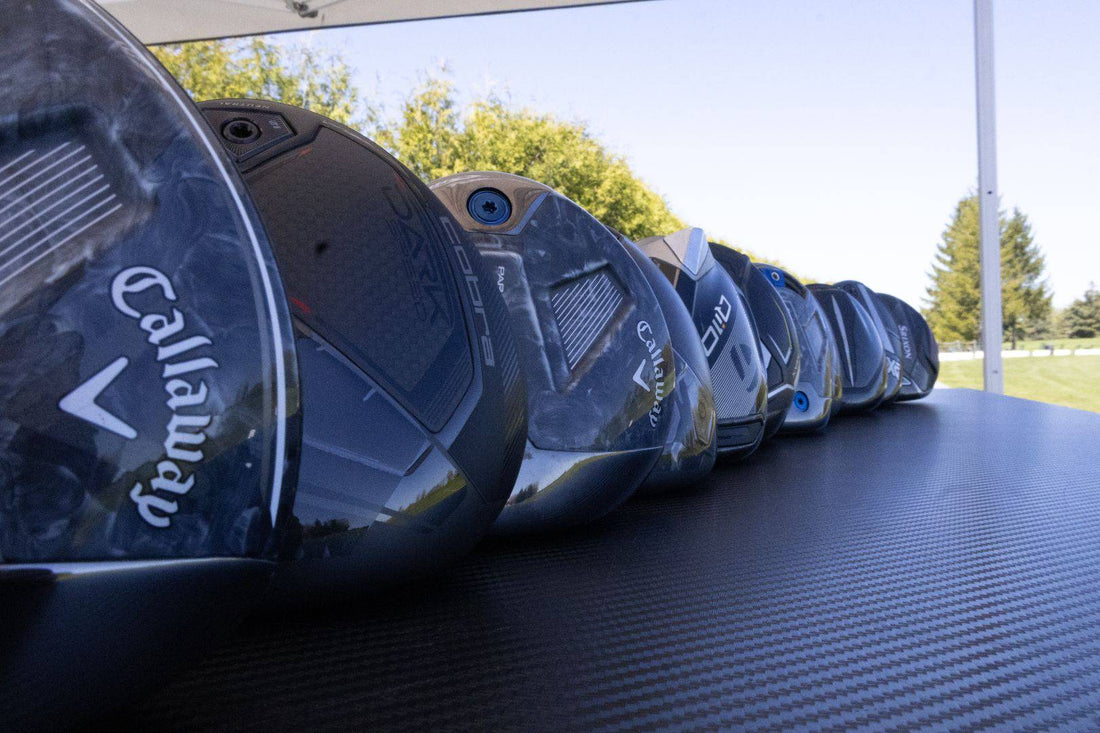
Why Scottie Scheffler Added a 7-Wood to His Bag
Share
Why 200 Yards Into a Green Is So Hard
Read time: 4min
Picture this: you’re on the tee of a par 3, 200 yards away. No water in front, wide enough landing area. You pull your 4-iron and think, “This should do it.”
But here’s the problem:
- Many recreational players can’t consistently strike a 3- or 4-iron well enough to rely on it.
- Even if you flush it, long irons don’t generate the right launch angle (how the ball takes off) or land angle (how steeply it comes down)
The result? You might cover the distance, but the ball doesn’t stop. It rolls through the green — sometimes 10 yards, sometimes more.
Launch Angles, Land Angles, and Loft
To hold a green, you need height. That means enough launch and a steep enough land angle so the ball comes in softly.
That’s why hitting an 8-iron 200 yards works for pros:
- An 8-iron has the loft to naturally create height.
- It lands steep, so the ball can actually stop on the green.
But unless you swing like a tour player, you’re not hitting an 8-iron 200 yards. You’re stuck reaching for long irons that simply don’t have the loft profile to do the job.
That’s the disconnect: what works for pros doesn’t translate to recreational golfers because of clubhead speed and loft.
Why Long Irons Struggle
Long irons are designed with thin faces and a forward center of gravity. That makes them great for distance off a tee, but not for holding a green.
Even if you strike your 4-iron perfectly, the trajectory is too flat. Unless you know every contour of the green and can predict the rollout, it’s a low-percentage play.
And most golfers don’t strike it perfectly. Consistency with long irons is notoriously difficult — which is why alternatives exist.
Hybrids: The Middle Ground
Hybrids were designed to solve exactly this problem. By moving the center of gravity deeper and lower, hybrids produce higher launch and steeper descent than irons.
That means the ball gets airborne more easily and has a better chance to stop. For many golfers, swapping a 4-iron for a 4-hybrid immediately improves their green-in-regulation percentage.
So why don’t the pros use them?
- Forgiveness and draw bias. Hybrids are designed to help everyday golfers, which means they’re more forgiving and tend to close the face through impact. For pros, that built-in draw is a liability.
- Control. Pros already have the speed and precision to make a 4-iron work. They prefer driving irons — slightly thicker than a standard iron, but without the draw bias of a hybrid.
The 7-Wood Advantage
Here’s where it gets interesting. Even though pros can hit 4-irons 220–230 yards, that doesn’t mean it’s the smartest play into a green.
That’s why more players — including Scottie Scheffler, the #1 golfer in the world — are adding 7-woods to the bag.
The 7-wood has similar loft and distance to a 4-hybrid, but with an even deeper center of gravity. That design launches the ball higher, lands it steeper, and makes it easier to stop.
It’s become a “cheat club”:
- From the fairway, it gets the ball up quickly and down softly.
- From the rough, it cuts through better than an iron.
- Into a green, it’s a much higher percentage play than a long iron.
The Forgiveness Ladder
Think of it this way:
- Iron: Least forgiving. Low launch, shallow land, tough to hold greens.
- Hybrid: More forgiving. Higher flight, better chance to stop.
-
7-Wood: Most forgiving. High launch, steep land, soft landings that stick.
And don’t overlook shafts. A fairway wood shaft is longer and more flexible than an iron shaft. That adds clubhead speed and helps generate the extra height you need.
Ego, Stigma, and the Shift
So why don’t more amateurs carry a 7-wood?
Ego: Many golfers think, “I should be able to hit a 4-iron like the pros.”
Stigma: For years, hybrids and 7-woods were labeled “senior clubs.”
But that stigma is fading. When Scottie Scheffler puts a 7-wood in play, it’s clear this isn’t just a club for aging swings — it’s a tool for scoring.
Who’s Using the 7-Wood on Tour
It’s not just Scheffler. More and more PGA players are leaning on the 7-wood for the same reasons recreational golfers should: forgiveness, higher launch, and softer landings.

When some of the best ball-strikers in the world are choosing a 7-wood, that tells you everything you need to know.
The Takeaway
For the average golfer, 200 yards into a green is one of the toughest shots in golf. Long irons don’t cut it. Hybrids help. And the 7-wood might just be the most reliable solution you can put in your bag.
![]() Want to see what's available in 7-wood shafts? Shop fairway wood shafts — fit to your swing for more height, more spin, and softer landings.
Want to see what's available in 7-wood shafts? Shop fairway wood shafts — fit to your swing for more height, more spin, and softer landings.
![]() Not sure which setup is right for you? Book a custom club fitting — get expert eyes on your swing and get that perfect build for your bag.
Not sure which setup is right for you? Book a custom club fitting — get expert eyes on your swing and get that perfect build for your bag.
